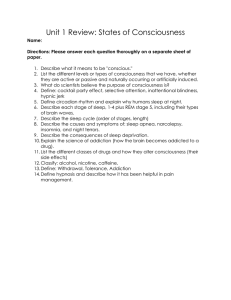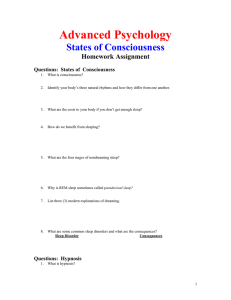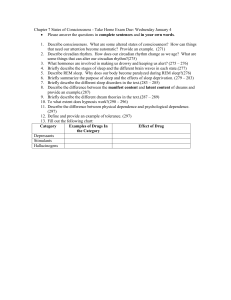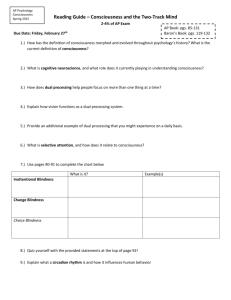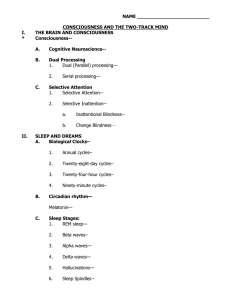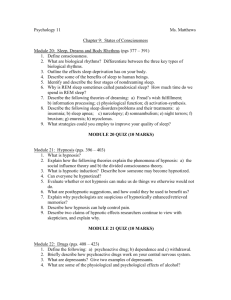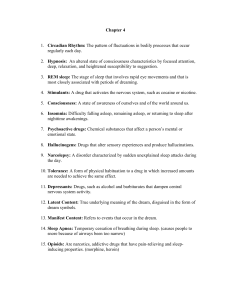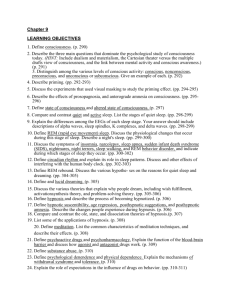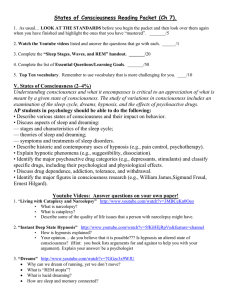Chs. 7 (Consciousness)
advertisement
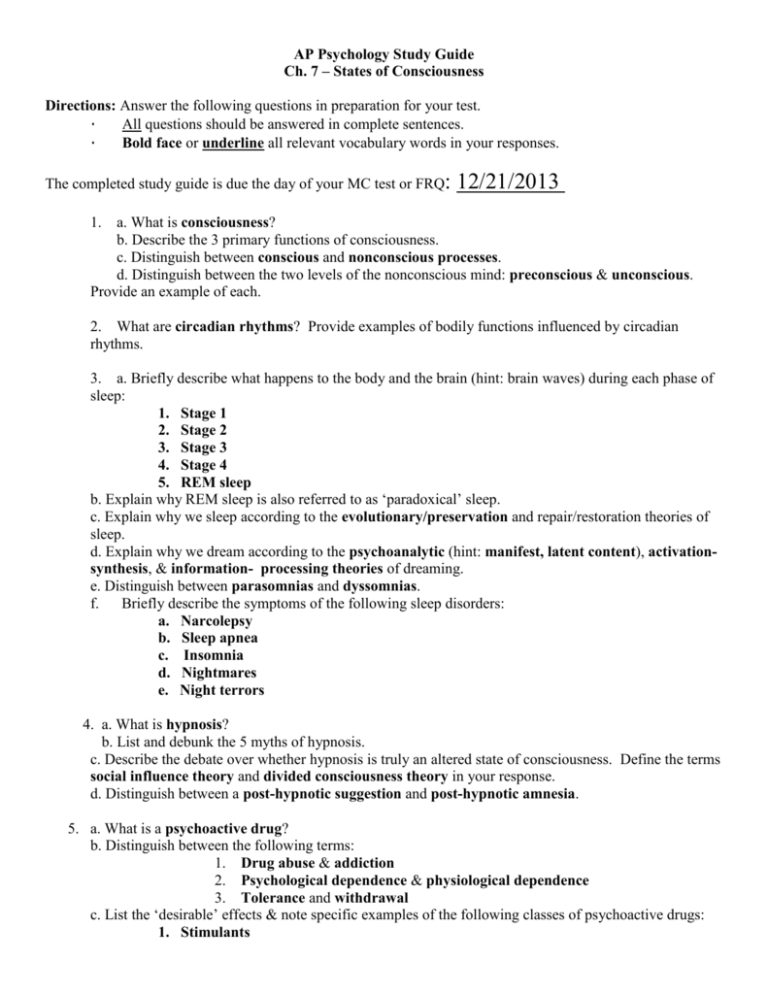
AP Psychology Study Guide Ch. 7 – States of Consciousness Directions: Answer the following questions in preparation for your test. · All questions should be answered in complete sentences. · Bold face or underline all relevant vocabulary words in your responses. The completed study guide is due the day of your MC test or FRQ: 12/21/2013 1. a. What is consciousness? b. Describe the 3 primary functions of consciousness. c. Distinguish between conscious and nonconscious processes. d. Distinguish between the two levels of the nonconscious mind: preconscious & unconscious. Provide an example of each. 2. What are circadian rhythms? Provide examples of bodily functions influenced by circadian rhythms. 3. a. Briefly describe what happens to the body and the brain (hint: brain waves) during each phase of sleep: 1. Stage 1 2. Stage 2 3. Stage 3 4. Stage 4 5. REM sleep b. Explain why REM sleep is also referred to as ‘paradoxical’ sleep. c. Explain why we sleep according to the evolutionary/preservation and repair/restoration theories of sleep. d. Explain why we dream according to the psychoanalytic (hint: manifest, latent content), activationsynthesis, & information- processing theories of dreaming. e. Distinguish between parasomnias and dyssomnias. f. Briefly describe the symptoms of the following sleep disorders: a. Narcolepsy b. Sleep apnea c. Insomnia d. Nightmares e. Night terrors 4. a. What is hypnosis? b. List and debunk the 5 myths of hypnosis. c. Describe the debate over whether hypnosis is truly an altered state of consciousness. Define the terms social influence theory and divided consciousness theory in your response. d. Distinguish between a post-hypnotic suggestion and post-hypnotic amnesia. 5. a. What is a psychoactive drug? b. Distinguish between the following terms: 1. Drug abuse & addiction 2. Psychological dependence & physiological dependence 3. Tolerance and withdrawal c. List the ‘desirable’ effects & note specific examples of the following classes of psychoactive drugs: 1. Stimulants 2. Depressants 3. Opiates/Narcotics 4. Hallucinogens/Psychedelics d. Distinguish between agonists and antagonists. e. Explain the environmental and biological forces influencing drug use and abuse. 6. Given the evidence provided in the chapter, are you a monist or a dualist? Explain.

